海星虾
Commensal star fish shrimp
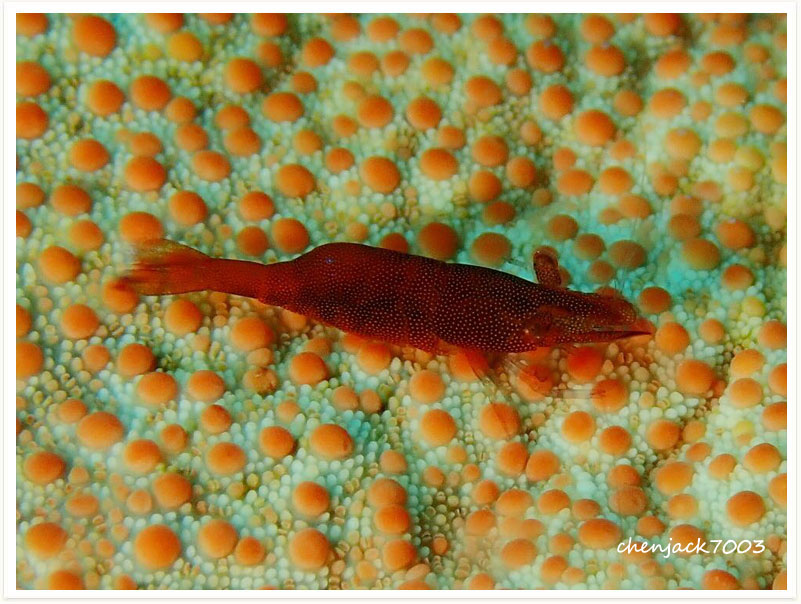
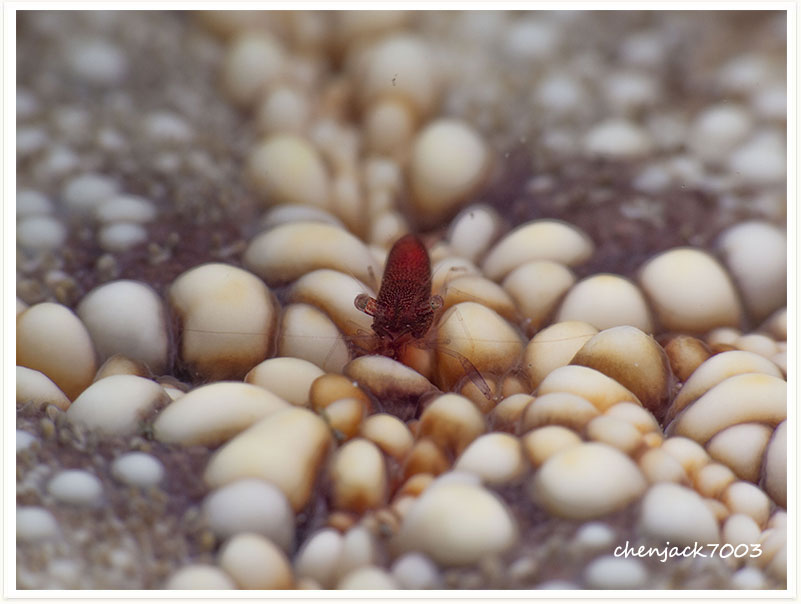
 Underwater Photography
Underwater PhotographyCommensal star fish shrimp


Zenopontonia is a genus of shrimp from the family Palaemonidae and which includes species that often live in symbiosis with larger animals.
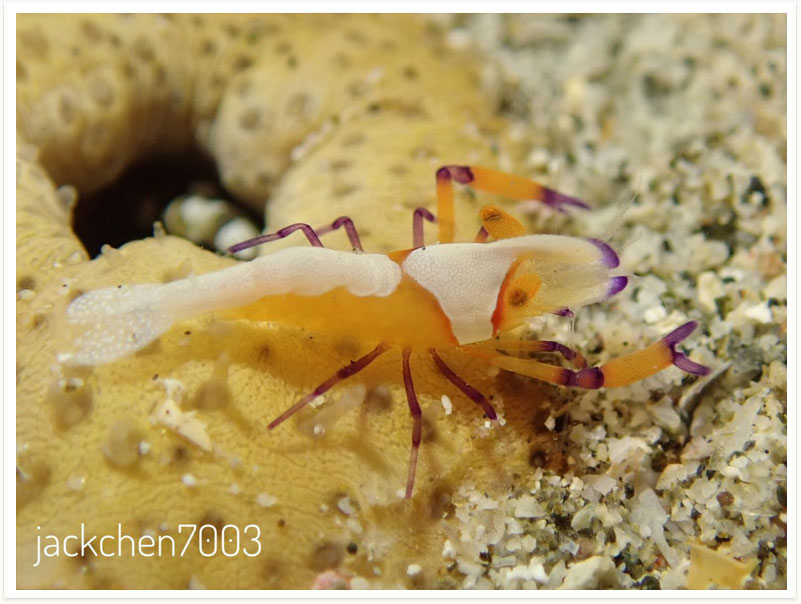
unknow
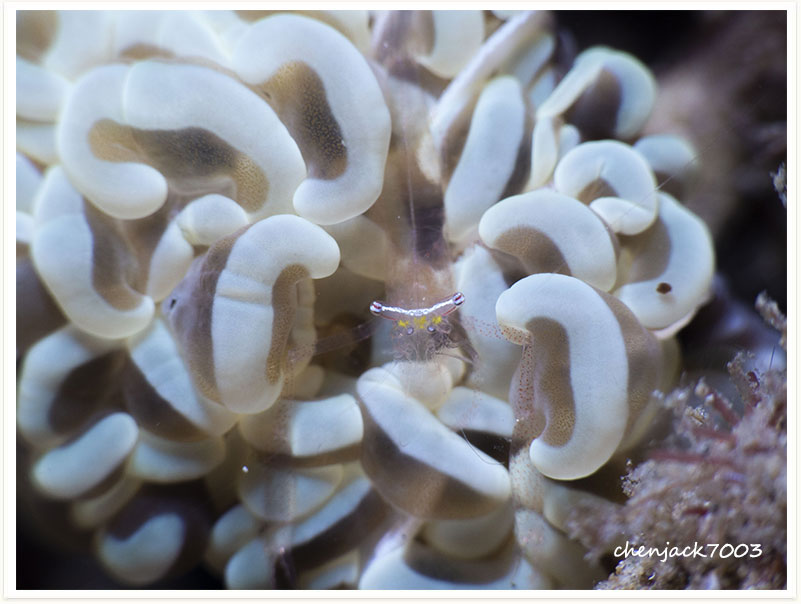
Vir philippinensis, sometimes referred to as the bubble coral shrimp, is a species of saltwater shrimp that was first described in 1984.
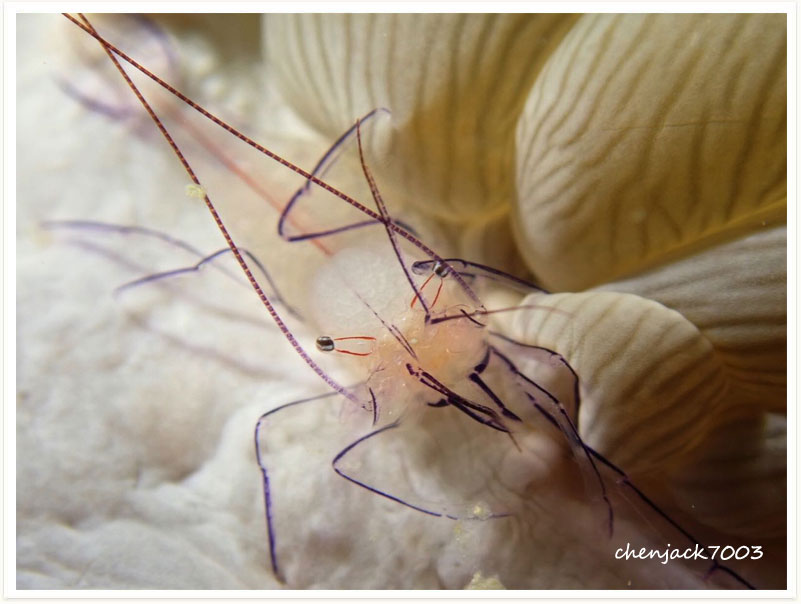
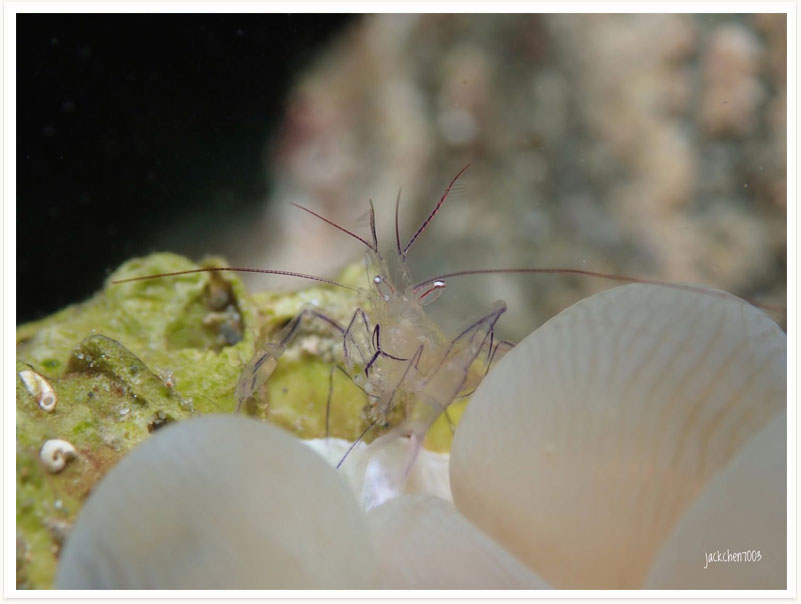
Trachypenaeopsis richtersii is a ten-legged species of the Penaeidae family. The scientific name of the species was first validly published in 1884 by Miers.
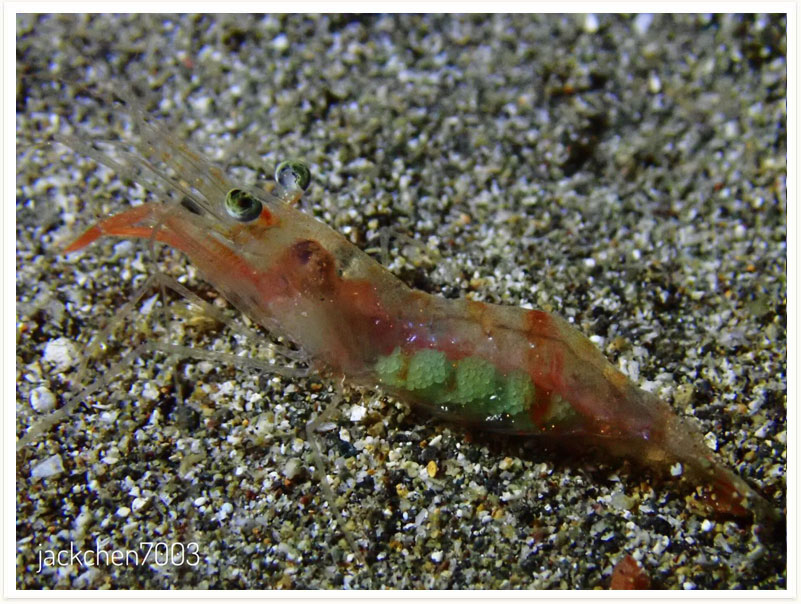
Tozeuma lanceolatum is a shrimp species from the Hippolytidae family. The scientific name of the species was first validly published in 1860 by Stimpson.
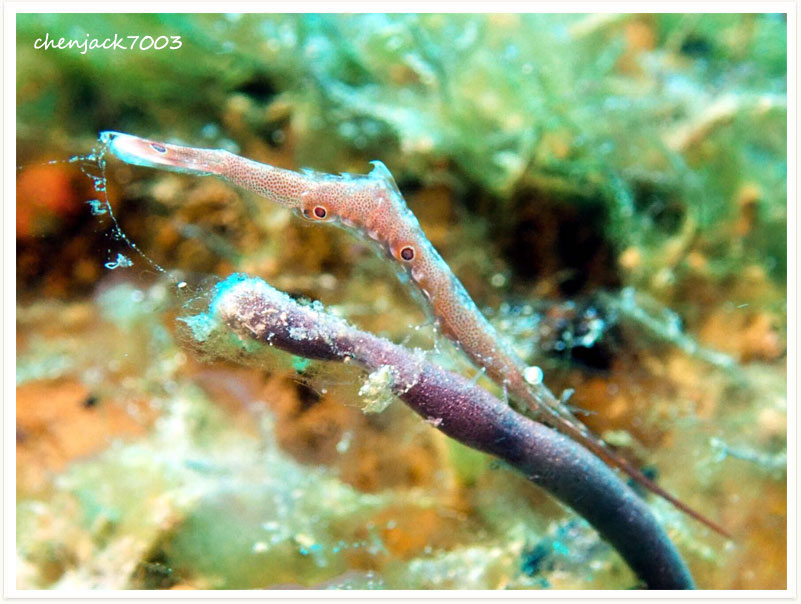
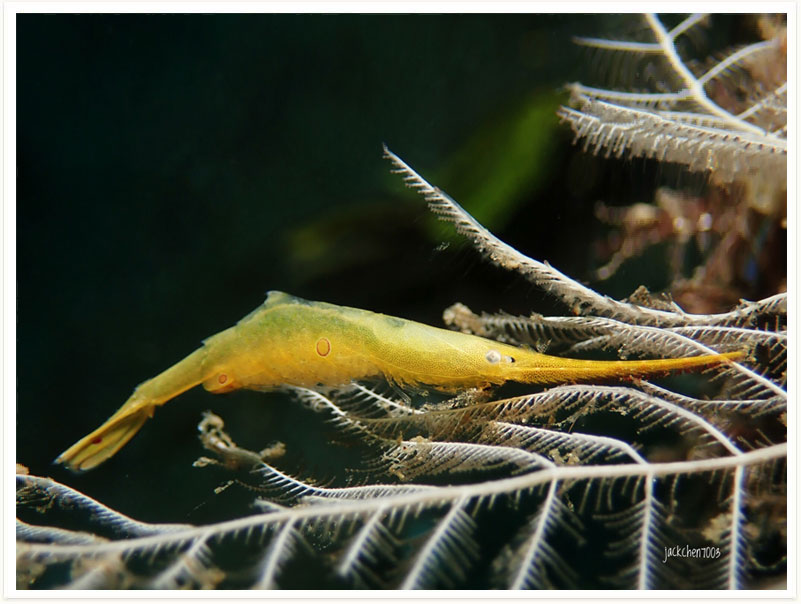
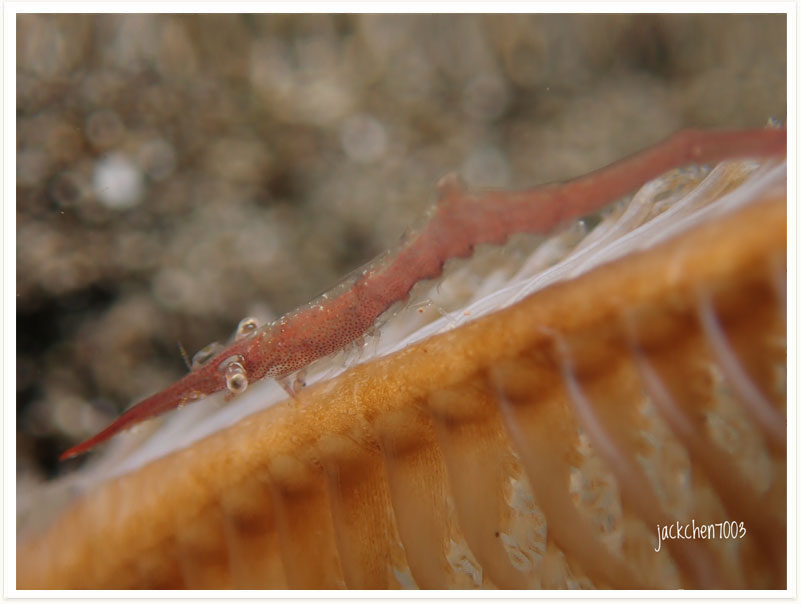

Thor amboinensis is a small shrimp growing to a length of about 13 millimetres (0.5 in). It is an olive brown colour with symmetrically placed white patches edged with thin blue lines. It characteristically carries its abdomen curved upwards with its tail fan above its head.
Synalpheus stimpsonii is a shrimp species from the Alpheidae family. The scientific name of the species was first validly published in 1888 by De Man.
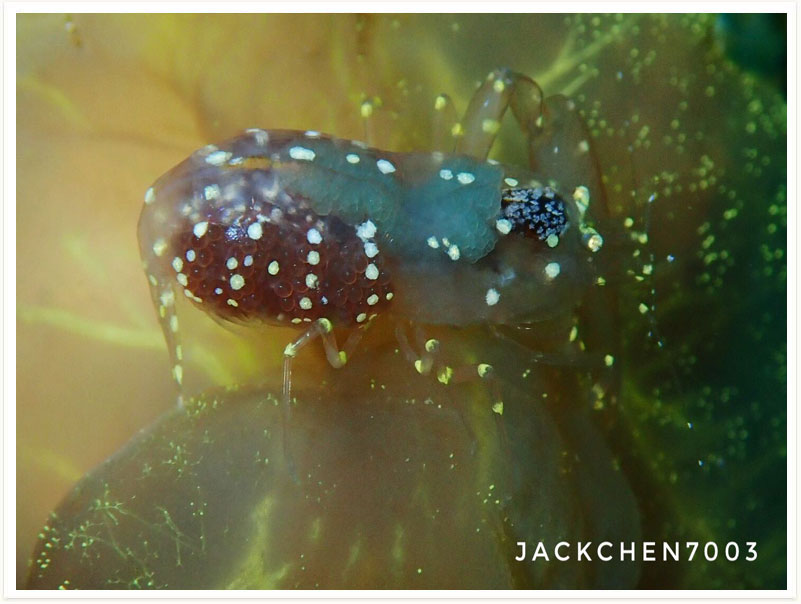
Synalpheus is a genus of snapping shrimp of the family Alpheidae, presently containing more than 100 species; new ones are described on a regular basis, and the exact number even of described species is disputed.

Stenopus hispidus reaches a total length of 60 millimetres (2.4 in), and has striking colouration. The ground colour is transparent, but the carapace, abdomen and the large third pereiopod are all banded red and white.The antennae and other pereiopods are white. The abdomen, carapace and third pereiopods are covered in spines.
Crustaceous species is Stegopontonia commensalis . It was first described by Giuseppe Nobili in 1906. Stegopontonia commensalis belongs to the genus Stegopontonia in the family Palaemonidae. So far no one was able to send in the perfect solution, which is not strange.
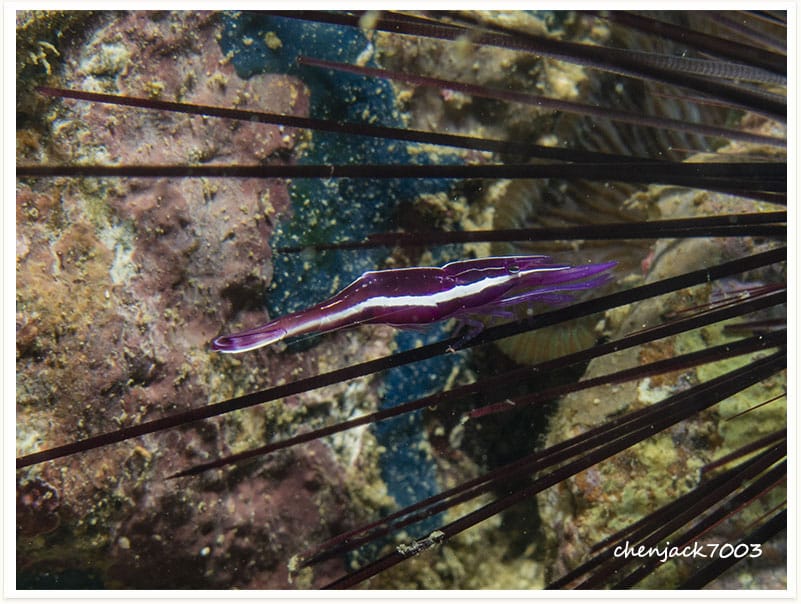
Saron marmoratus is a rather hunch-backed dumpy species of shrimp. Its rostrum is slightly longer than its carapace and is strongly recurved, it has 1 or 2 spines on its dorsal margin, followed by 3 or 4 spines on the carapace, and there are 8-10 long spines on the ventral margin of the carapace. The dorsal margin of the carapace and the abdomen have tufts of setae, which are denser in the females. The males have elongated chaelae which are longer than body and the females possess an obvious brush-like structure of setae on the first pair of legs. The legs feature brown or blue transverse bands. They are variable in colour and the ground colour can be red, blue or brown, mottled with brown or green, the legs are marked with blue or brown transverse bans.
The camel shrimp is a hardy saltwater shrimp, It is covered with red and white stripes that run across its entire body. R. uritai has a movable rostrum or beak that is generally facing upwards. Male camel shrimp have larger chelipeds or claw compared to the female camel shrimp. The claw is formed when the shrimp reaches maturity.
Pseudoprotella phasma is a flake lobster species from the Caprellidae family. The scientific name of the species was first validly published in 1804 by Montagu.
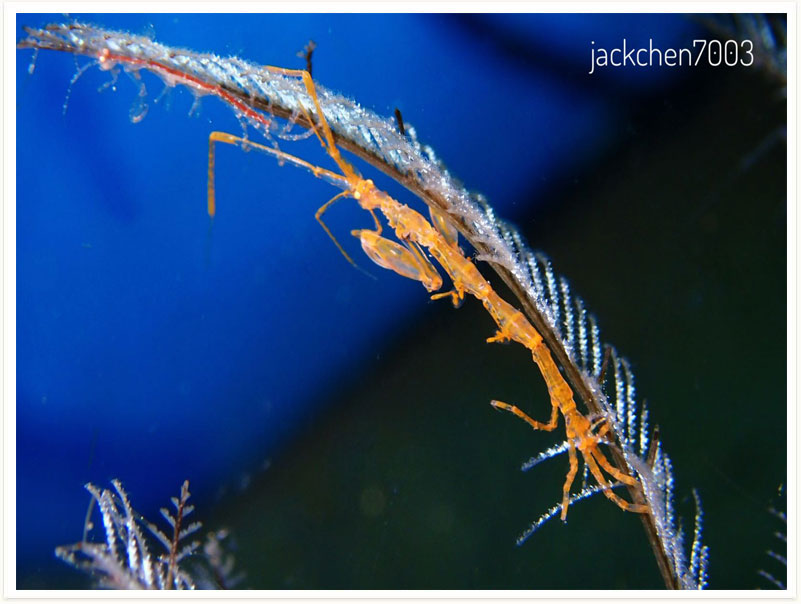
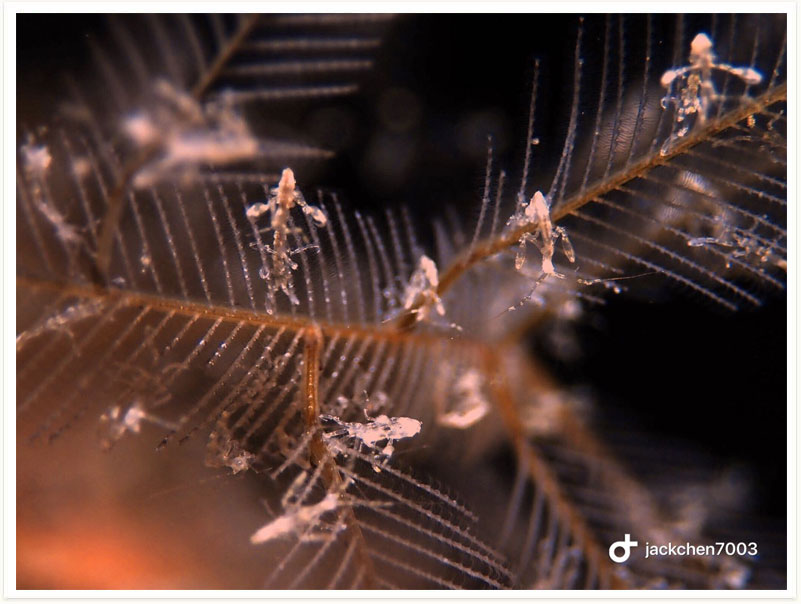

The Processidae are a family of shrimp, comprising 65 species in five genera, and the only family in the superfamily Processoidea. They are small, nocturnal animals, mostly living in shallow seas, particularly on grass flats. The first pereiopods are usually asymmetrical, with a claw on one, but not the other (Ambidexter forming the exception to this rule). The rostrum is generally a simple projection from the front of the carapace, with two teeth, one at the tip, and one further back
Pontonides ankeri is a shrimp species from the Palaemonidae family. The scientific name of the species was first validly published in 2007 by Marin.
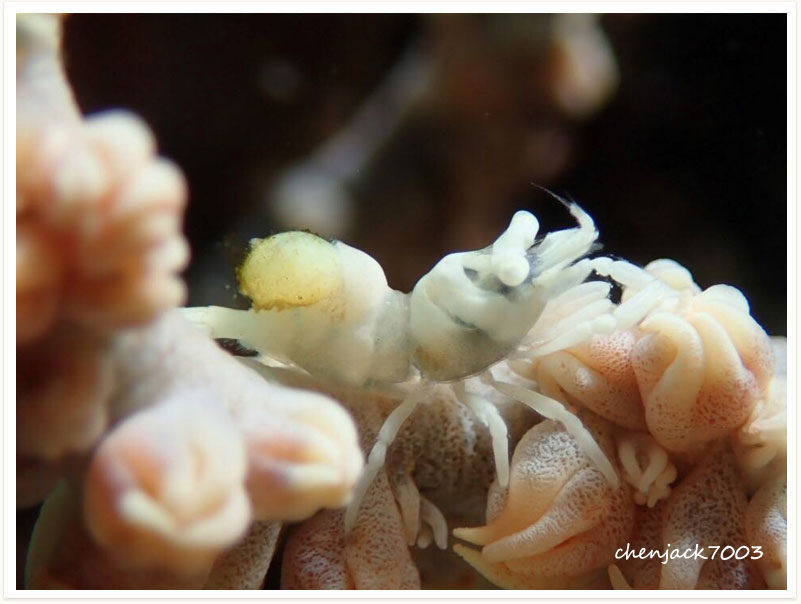
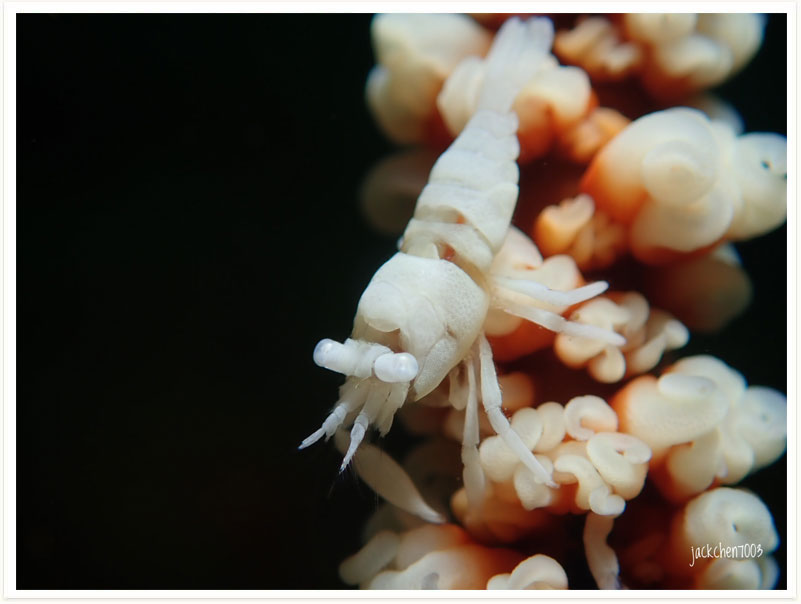
Pliopontonia furtiva is a shrimp species from the Palaemonidae family. The scientific name of the species was first validly published in 1973 by Bruce.
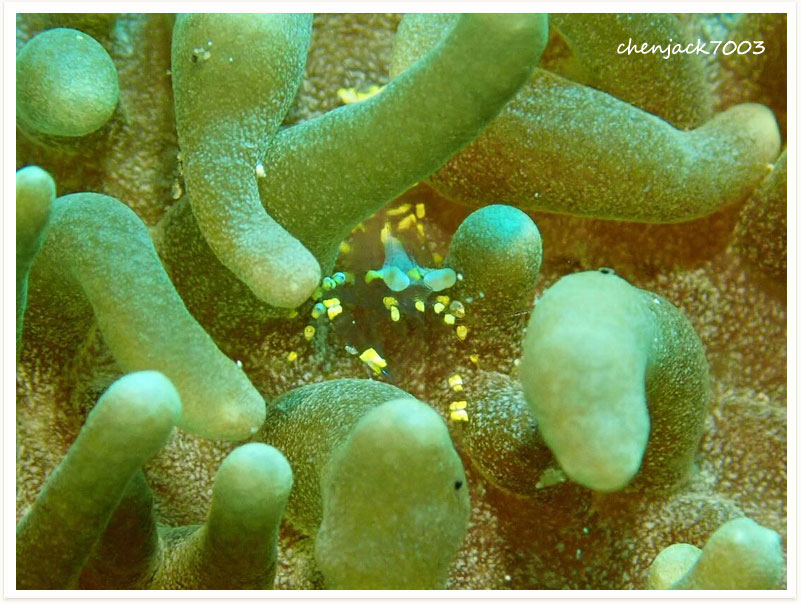
Phyllognathia ceratophthalma is a shrimp species from the Hymenoceridae family. The scientific name of the species was first validly published in 1913 by Balss.
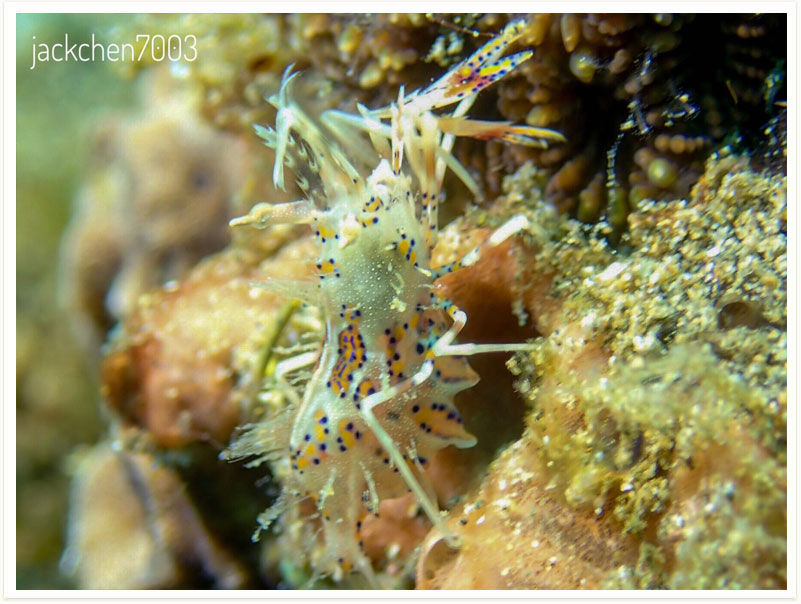
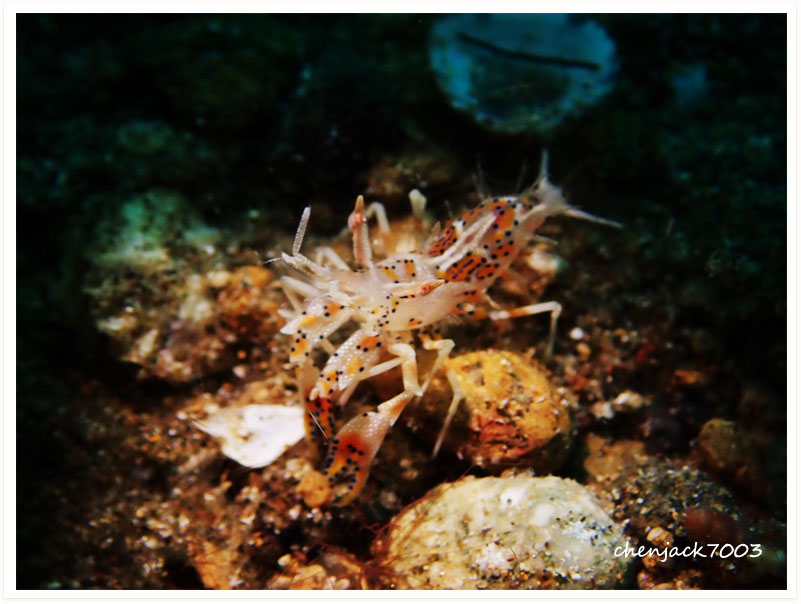
Phycocaris simulans is a shrimp species from the Hippolytidae family. The scientific name of the species was first validly published in 1916 by Kemp.
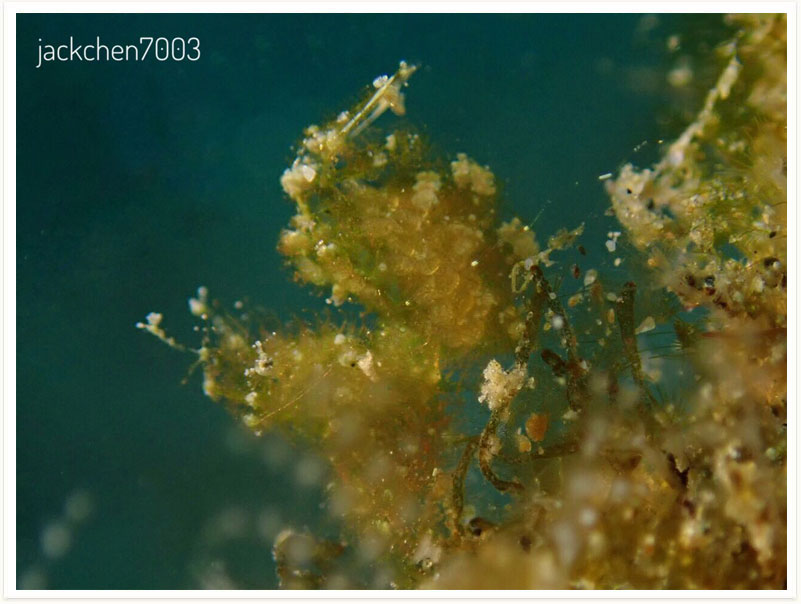
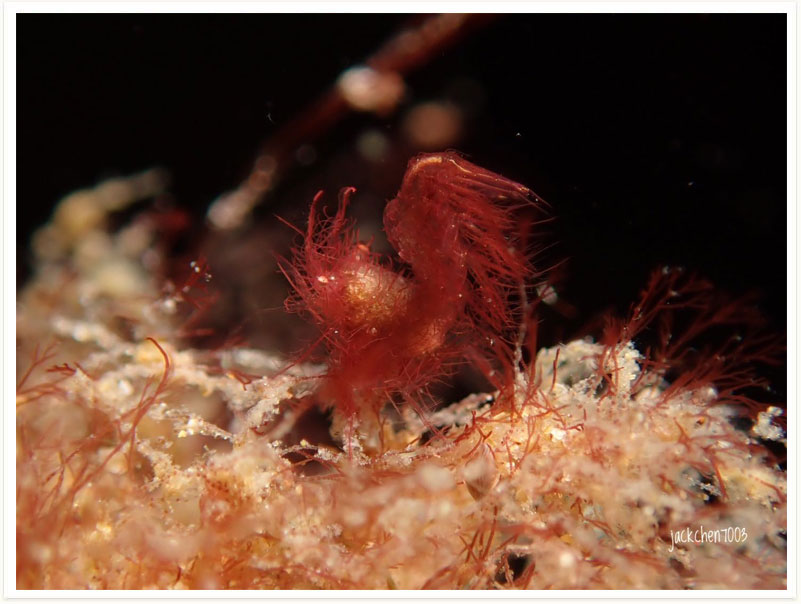

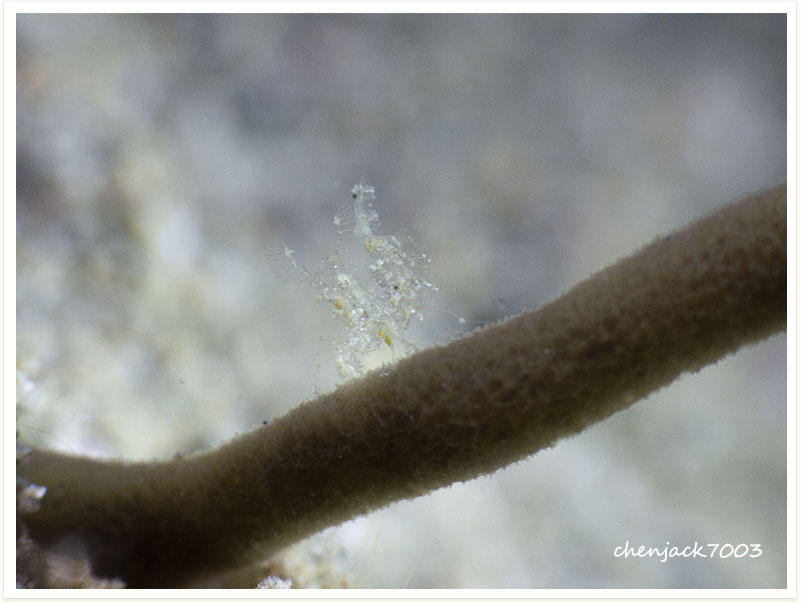
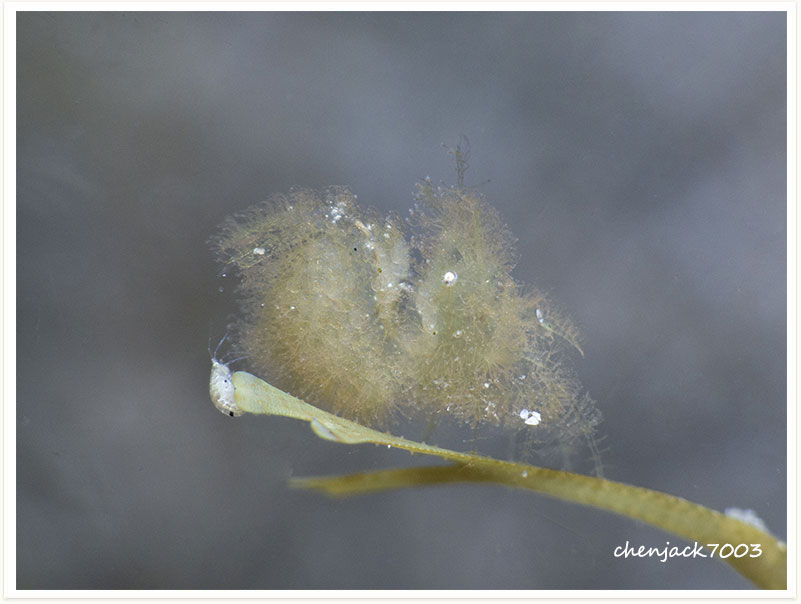
Periclimenes colemani is a species of saltwater shrimp found in the Indo-Pacific Ocean that was first described in 1975.
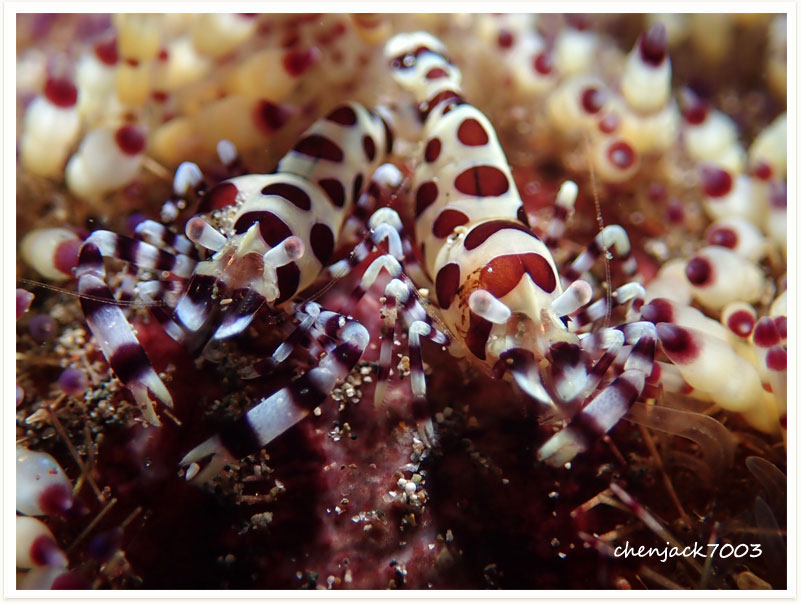
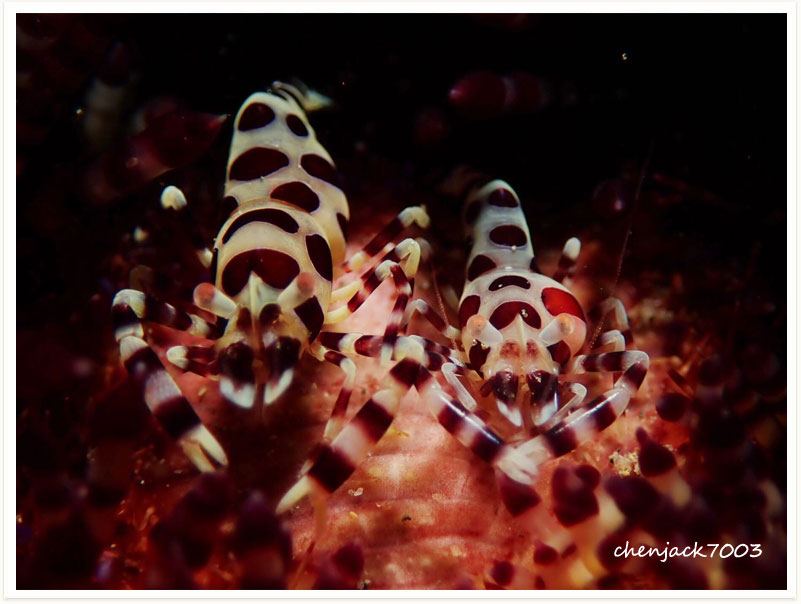
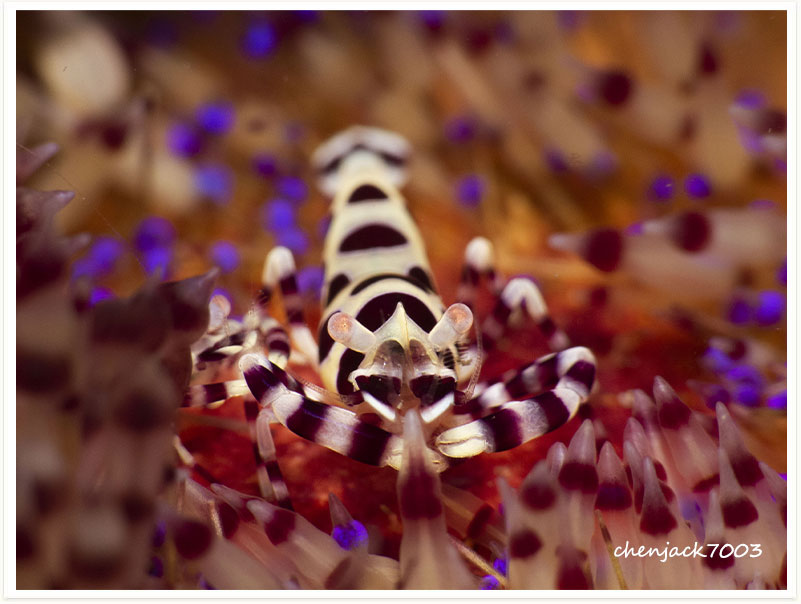
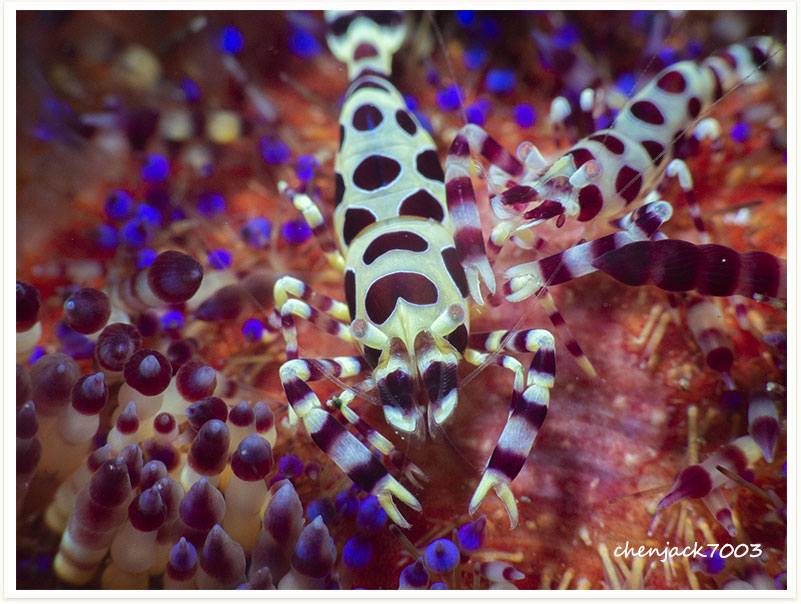
Periclimenes affinis is a species of shrimp found in the Pacific and Indian Oceans.It was first named by Leo Zehntner in 1894.
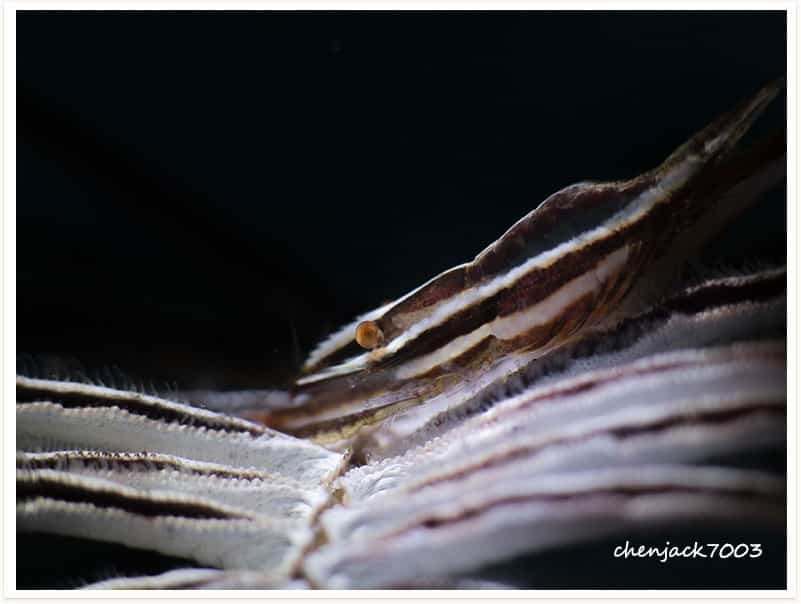
Odontonia bagginsi (more commonly known as Hobbit Shrimp) is a tiny species of shrimp with eight hairy limbs. It was discovered in 2009 by Leiden University biology student Werner de Gier and shrimp researcher Dr. Charles Fransen in Ternate, Indonesia. The name came from the novel The Hobbit starring Bilbo Baggins as the fictional “hobbit” characters have hairy feet.Genetic characters of the shrimp was put in the tree of life.
O. scyllarus is one of the larger, more colourful mantis shrimps commonly seen, ranging in size from 3 to 18 cm (1.2 to 7.1 in). They are primarily green with orange legs and leopard-like spots on the anterior carapace.
Their ability to see circularly polarised light has led to studies to determine if the mechanisms by which their eyes operate can be replicated for use in reading CDs and similar optical information-storage devices.
Odontodactylus is a genus of mantis shrimp, the only genus in the family Odontodactylidae. Mantis shrimp of the genus Odontodactylus can not only detect circular polarisation of light, but can also detect polarise light reflecting off their telson and uropods.
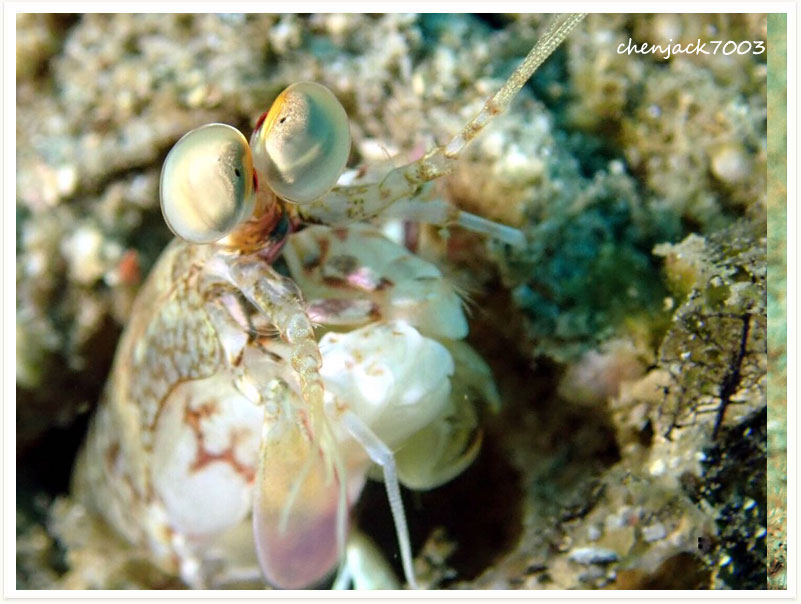
Miropandalus hardingi is a shrimp species from the Pandalidae family. The scientific name of the species was first validly published in 1983 by Bruce.
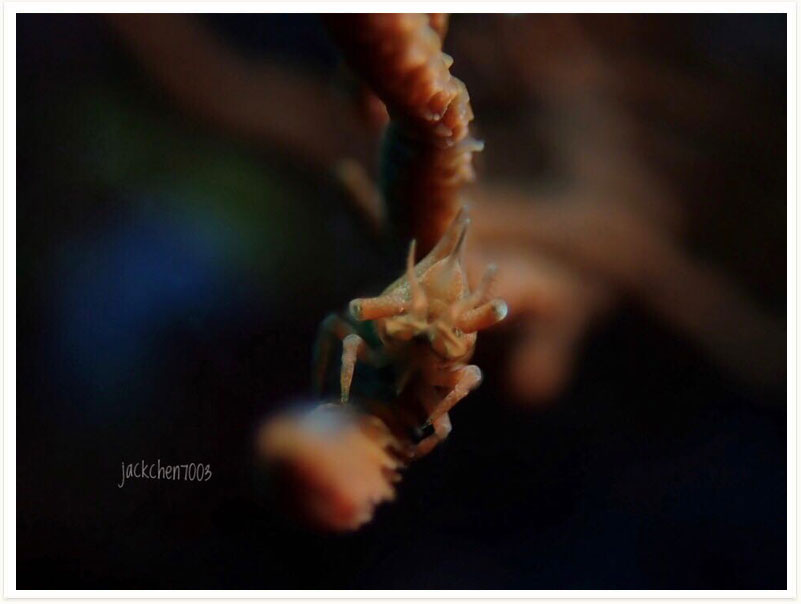
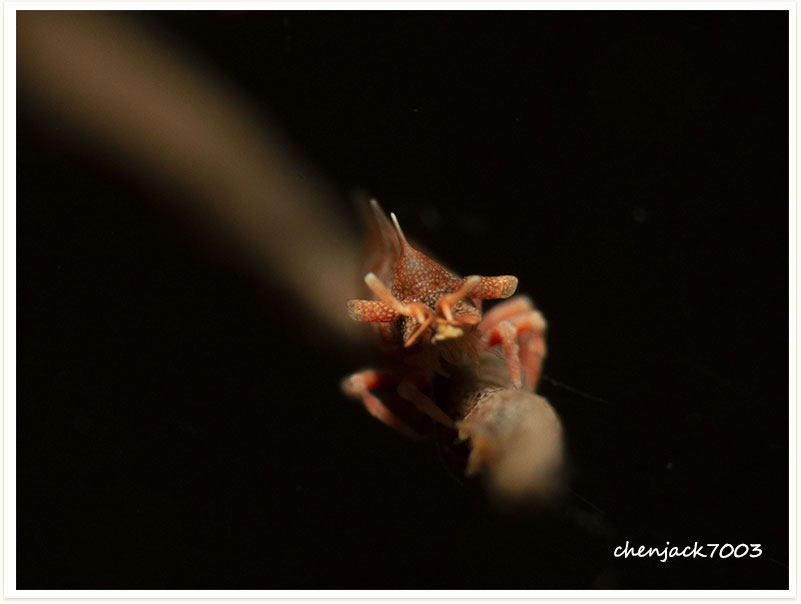
Manipontonia psamathe is a species of saltwater shrimp that was first described in 1902.
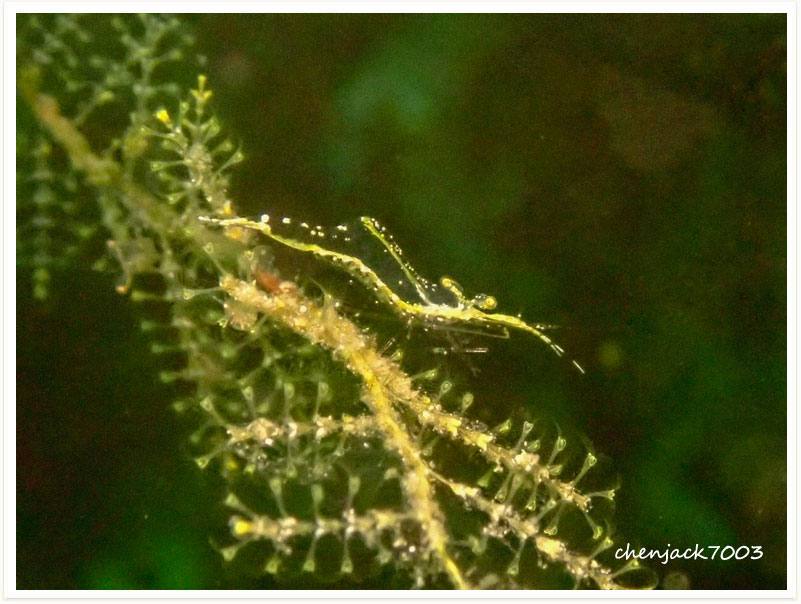
Lysiosquillina lisa is a praying mantis of the Lysiosquillidae family. The scientific name of the species was first validly published in 2001 by Ahyong & Randall.

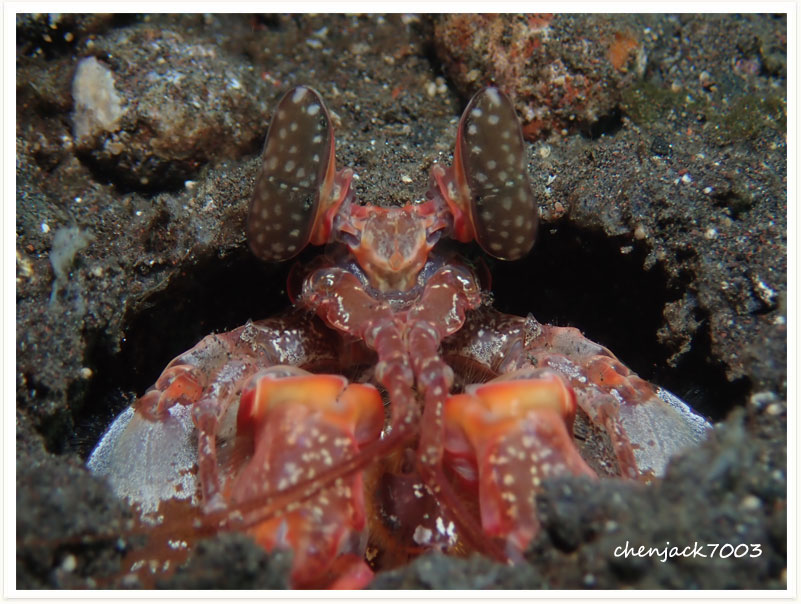
Leander plumosus is a shrimp species from the Palaemonidae family. The scientific name of the species was first validly published in 1994 by Bruce.
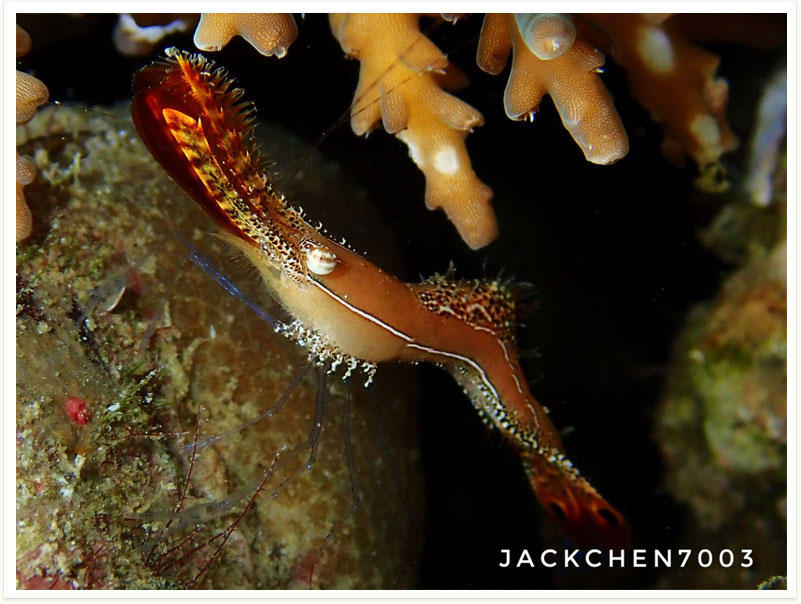
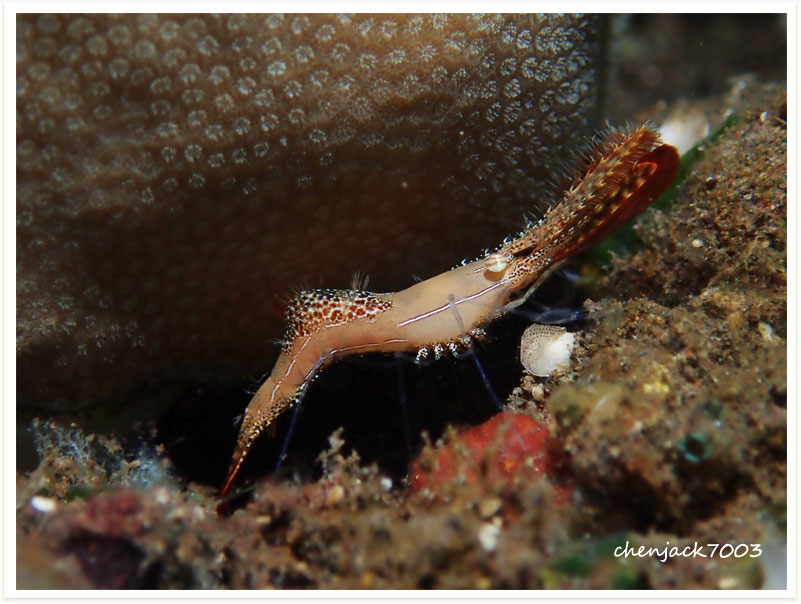
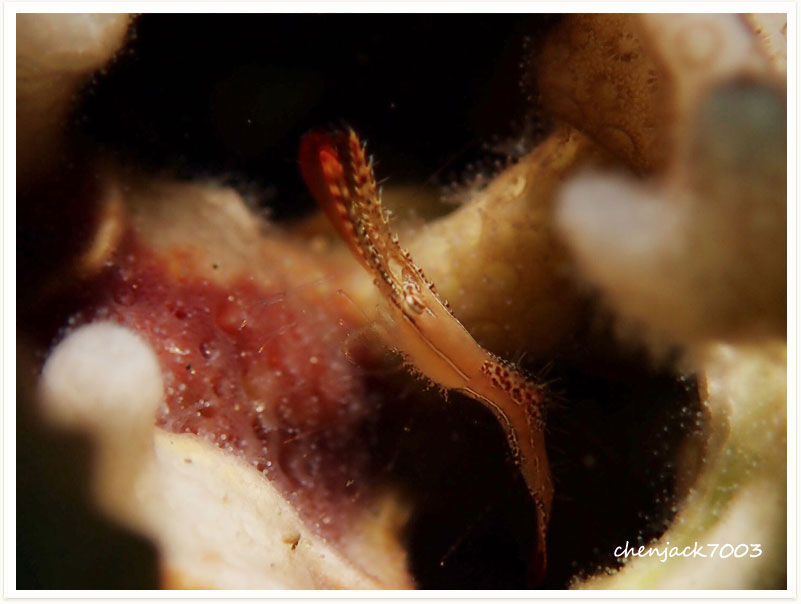
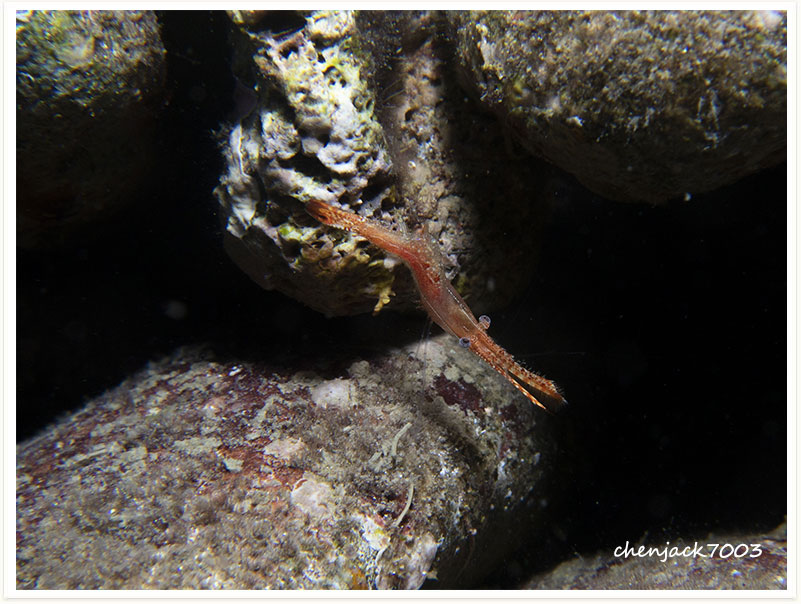
Latreutes pymoeus is a shrimp species from the Hippolytidae family. The scientific name of the species was first validly published in 1904 by Nobili.
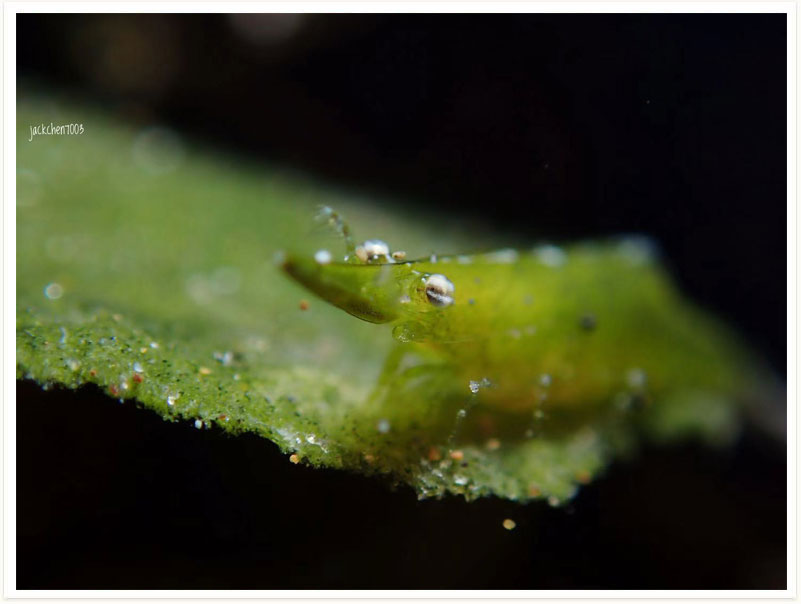
unknow
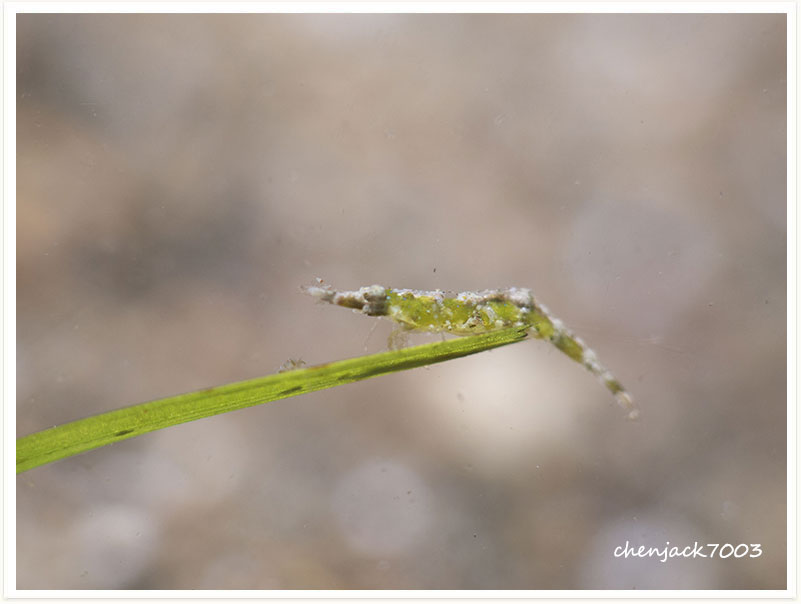
Laomenes pardus is a shrimp species from the Palaemonidae family. The scientific name of the species was first validly published in 2009 by Marin.
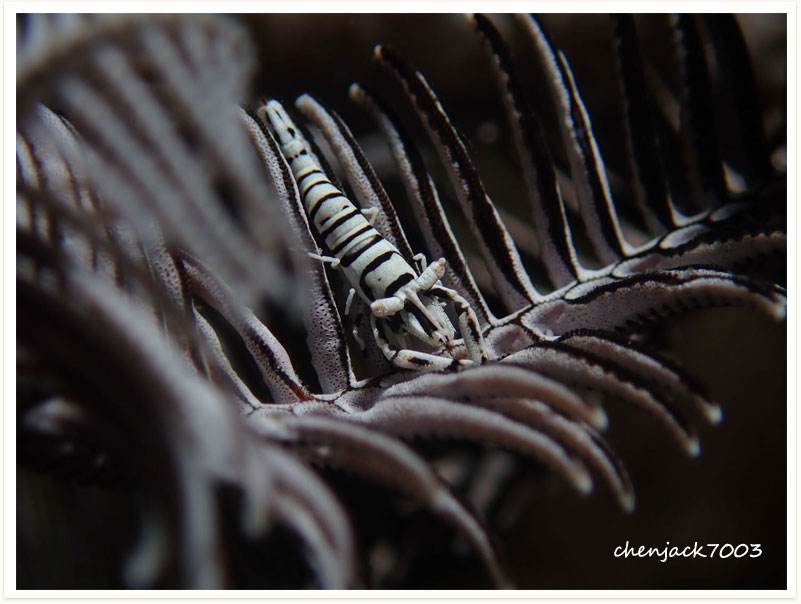
Idiomysis is a genus of small mysids found in warm, shallow waters of Indian Ocean (including Red Sea) and Pacific.
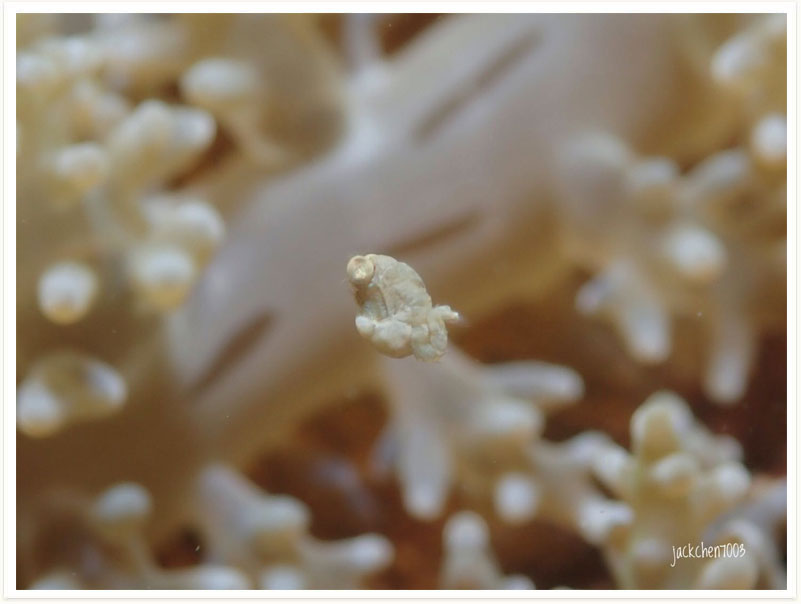
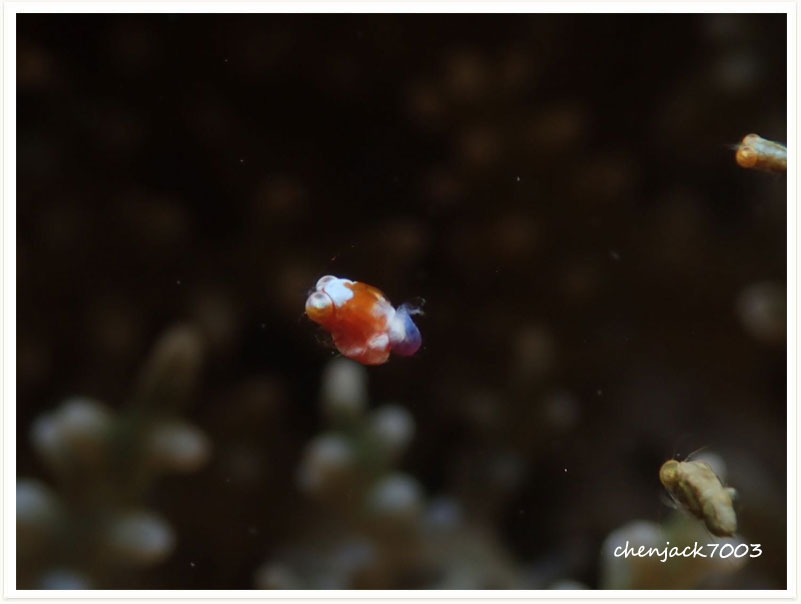
The Hymenocera, or Harlequin shrimp, is usually cream colored or white with occasional spots. Around the Pacific Ocean, many of these shrimp will have red spots while the Indian Ocean shrimp typically have purple spots while its close cousin, the Hawaiian H. picta, has purple and red spots off of their body, the shrimp have two walking legs on each side and large claws, or cheliped. The claws and eyes appear to look flattened and thin. On its head the shrimp have “petal-like sensory antennules” to smell out their prey. Their body usually reaches up to 5 cm or 2 inches, and the male is just a little bit smaller than the female.
Hippolyte commensalis is a shrimp species from the Hippolytidae family. The scientific name of the species was first validly published in 1925 by Kemp.
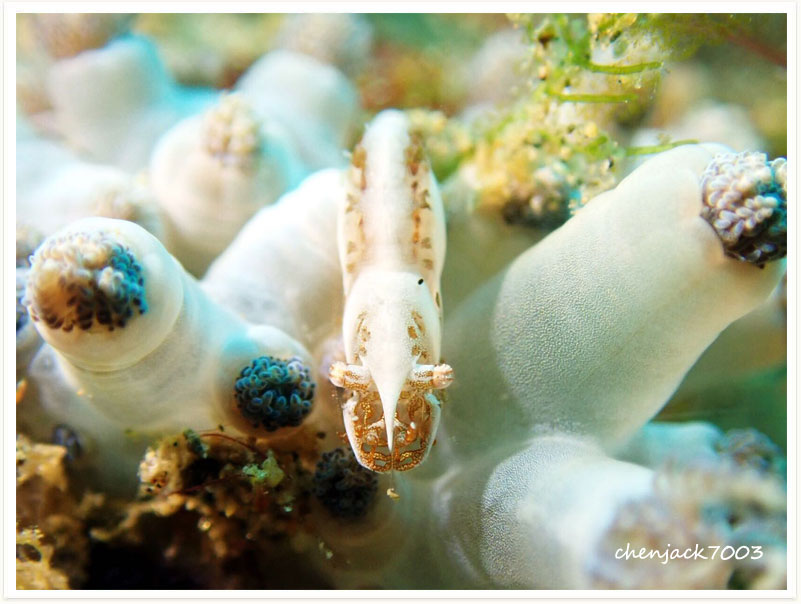
Marin, I. (2012). The “Hamopontonia corallicola” Bruce, 1970 species complex (Crustacea, Decapoda, Palaemonidae): new records and new species from the Great Barrier Reef, Australia. Zootaxa. 3272: 35-56.
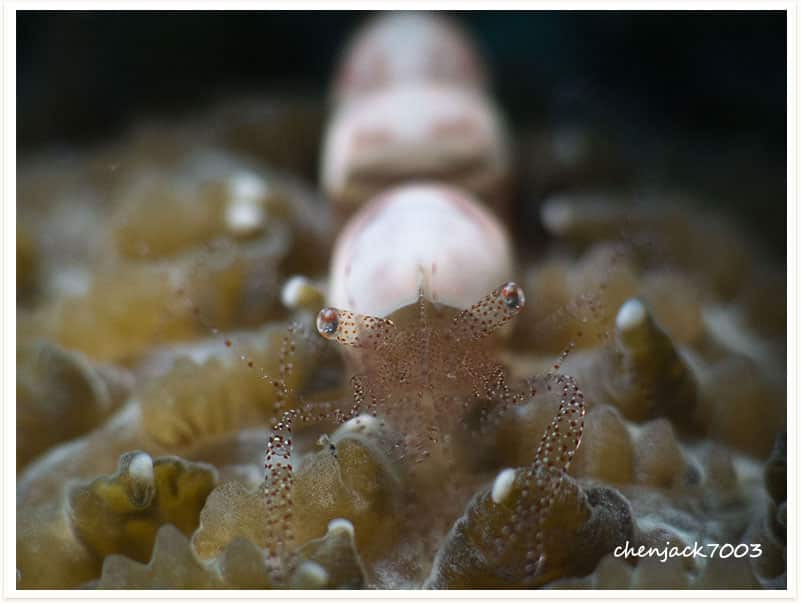
Gelastocaris paronae is a shrimp species from the Hippolytidae family. The scientific name of the species was first validly published in 1905 by Nobili.
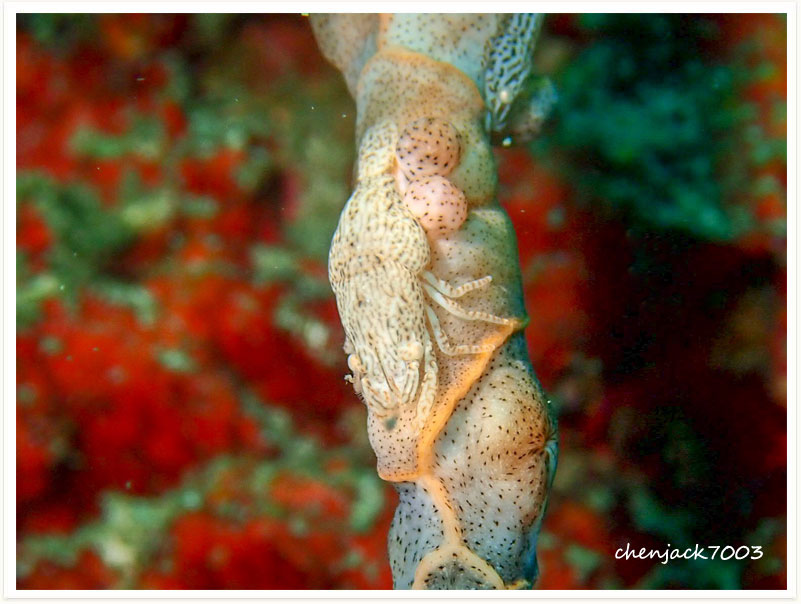
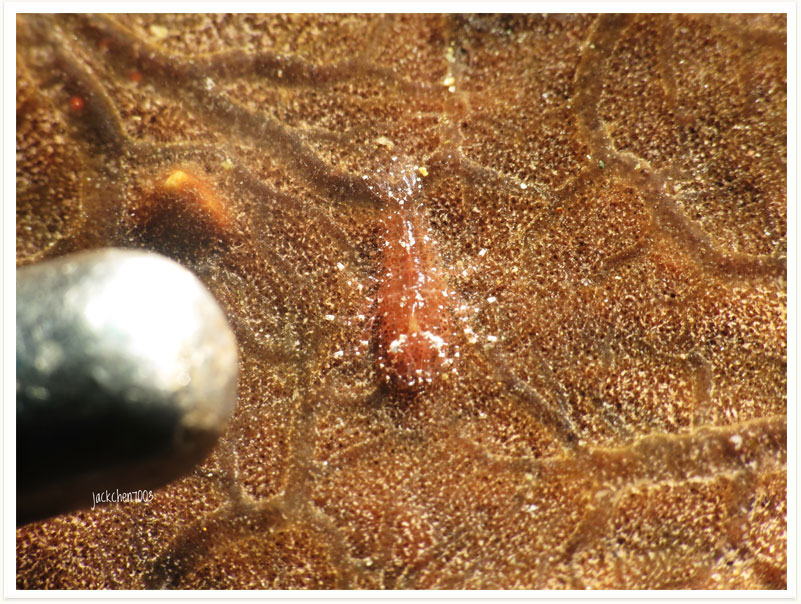
Dasycaris zanzibarica is a shrimp species from the Palaemonidae family. The scientific name of the species was first validly published in 1973 by Bruce.
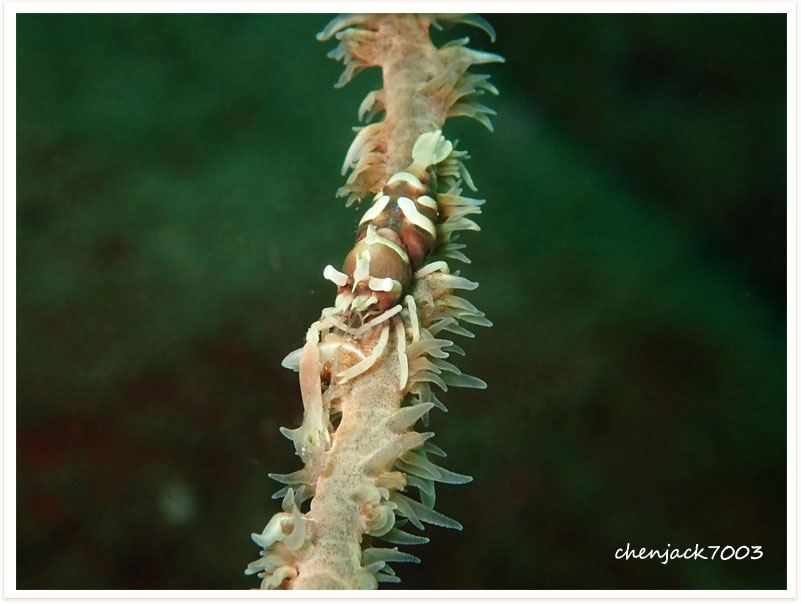
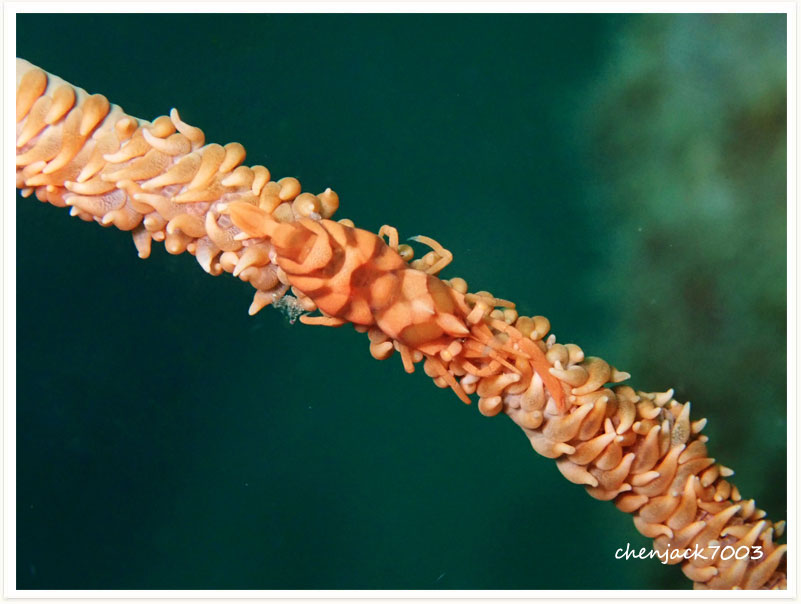
unknow
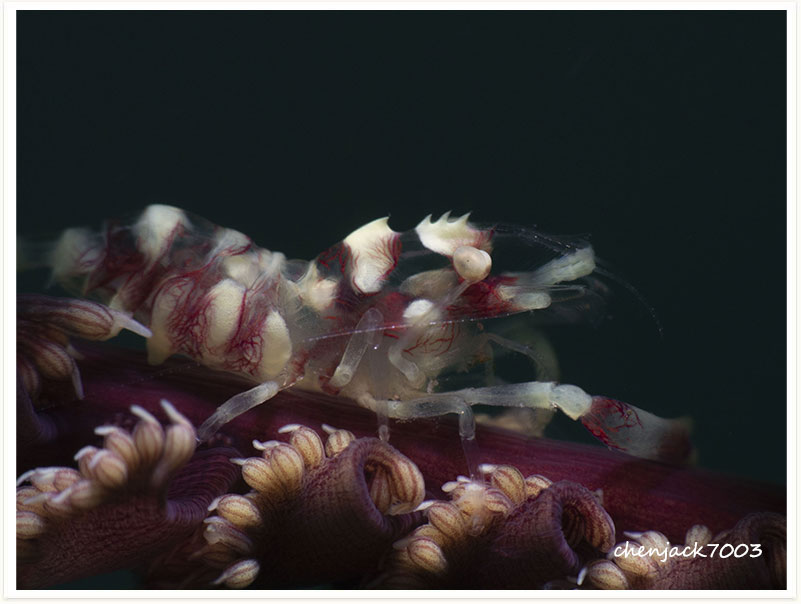
Also known as Anemone Shrimp, Carid Shrimps, Commensal Shrimps, Crown Shrimp, Ghost Shrimp, Heliofungia Shrimp, Mushroom Coral Shrimp, Partner Shrimp, Plate Coral Shrimp, Plumed Shrimp, Popcorn Anemone Shrimp.
Found on coral and rocky reefs living in a symbiotic relationship with various anemones and mushroom corals. They feed on algae, parasites and plankton. Body transparent, red to black with a white spiny head (that looks like a dollop of cream) Length 4cm Depth – 3-30m Widespread Western Central Pacific
Araiopontonia odontorhyncha is a shrimp species from the Palaemonidae family. The scientific name of the species was first validly published in 1970 by Fujino & Miyake.
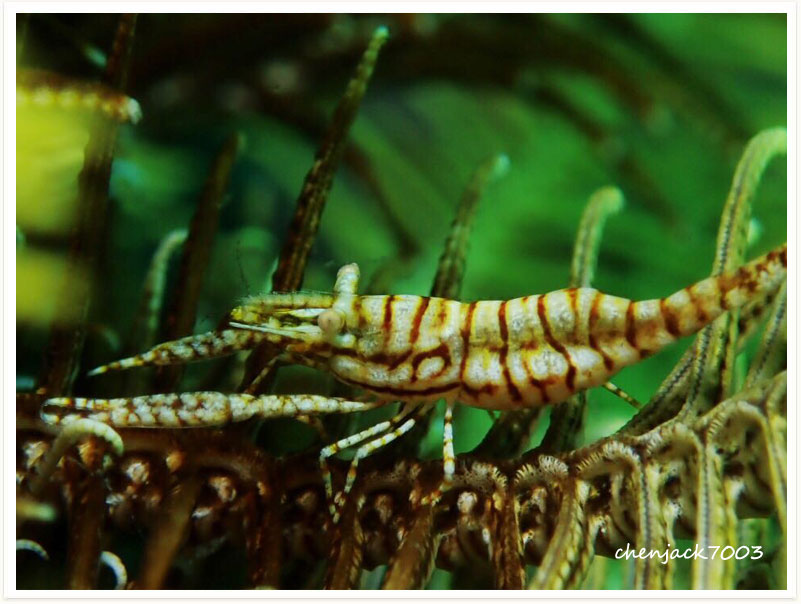
Ancylomenes sarasvati is a shrimp species from the Palaemonidae family. The scientific name of the species was first validly published in 2002 by Okuno.
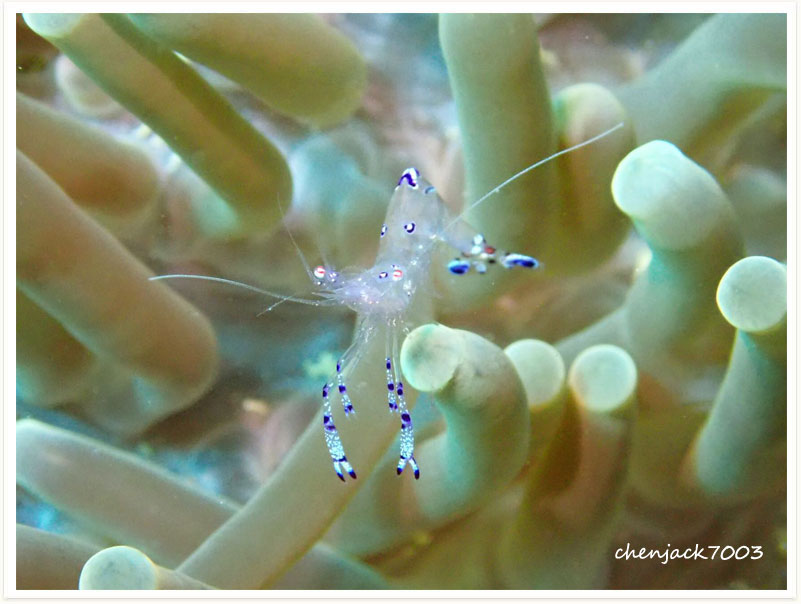
Ancylomenes magnificus, is a kind of cleaner shrimp common to the Western Pacific Ocean at depths of 3–29 metres (10–95 ft).
These shrimp are commonly found on scleractinian coral, Catalaphyllia and the anemone, Dofleinia armata. They have a transparent body except on the carapace and segments of the abdomen which have bands of white specks outlined in red. The tail and the hump on the abdomen are also white.
Periclimenes brevicarpalis can reach a length of 0.5 to 1.0 inch. The body is almost transparent, with some white spots over carapace and tail and orange spots outlined in black over the caudal fin. Females are larger than males and have more white spots. This species lives symbiotically with sea anemones, corals and jelly fish.
This species of shrimp can be easily confused with Allogalathea elegans (crinoid squat lobster) due to its long chelipeds, the visible shape of its cephalothorax, its abdomen slightly curved under the body and by its colours. However, Allopontonia brockii differs in several points from Allogalathea elegans: